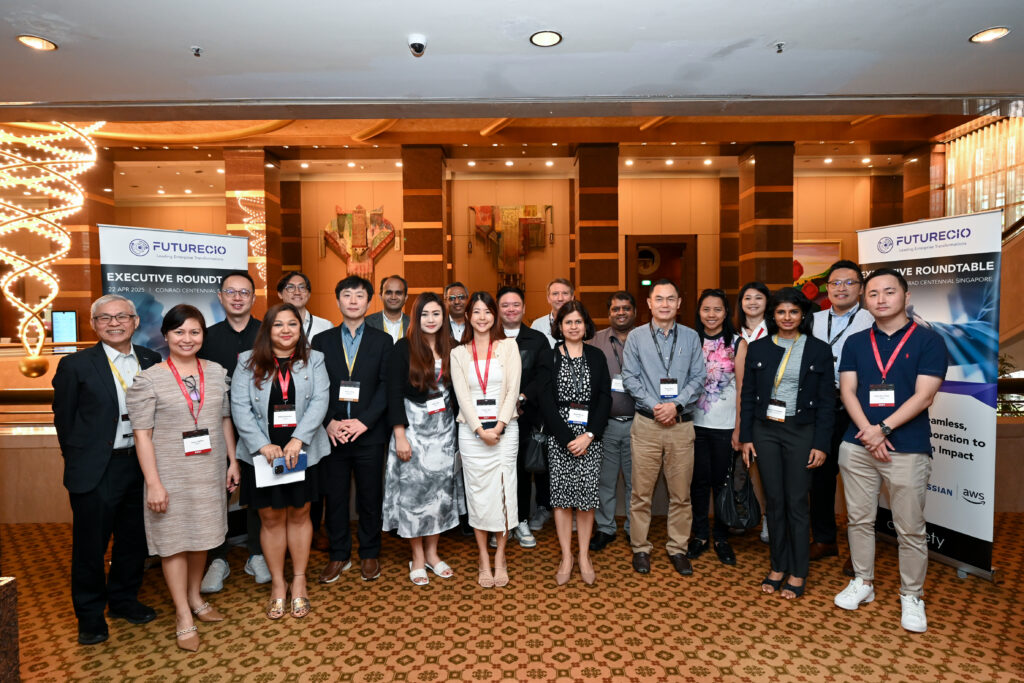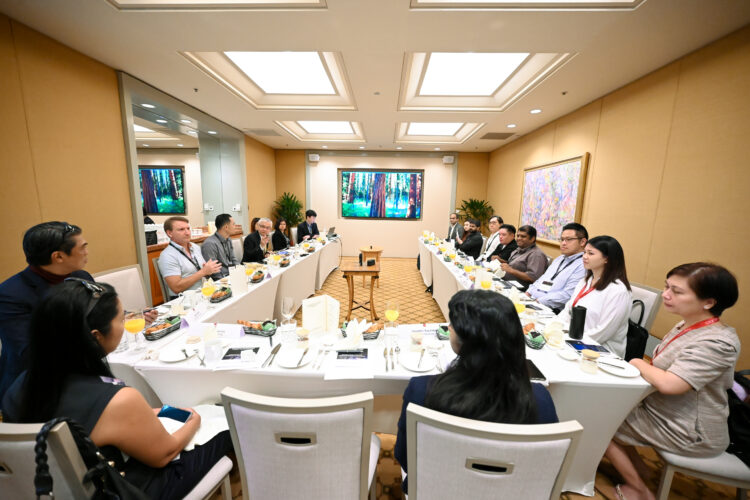In today's hyper-connected IT enterprise landscape, enabling collaboration is an operational necessity. Forward-thinking technology leaders are laser-focused on dismantling organisational silos and creating collaborative ecosystems that drive innovation velocity. The problem is finding the right “glue” framework.
Enter Atlassian's System of Work. It is fast emerging as a cornerstone framework, enabling cross-functional alignment between business units and technology teams to maximise collective impact. In a recent FutureCIO roundtable, jointly organised with iZeno, Atlassian and AWS, tech leaders discussed the merits of such a framework and why collaborative ecosystems are vital for AI ambitions.

As Kevin Jeong, cloud partner manager for Asia at Atlassian, succinctly put across during the discussion, “To innovate quickly, technology and business teams need a shared way of working. Atlassian System of Work philosophy focuses on how to bring teams together and makes it easy for all teams to collaborate and move in the same direction, fast.”

Gayathiri Anpalakan, technical business development lead for global healthcare and life sciences, at AWS Industries, agreed. “When I heard about Atlassian’s System of Work, it reminded me of the systemic process of ‘Working Backwards’ at Amazon, in which we define the customer experience, then iteratively work backwards from that point until teams are clear on what to build and the value it will add to the customer’s experience. Most of Amazon's major products and initiatives since 2004 were created through Working Backwards.”
Muhammad Fahad, deputy director for ITSM at iZeno, emphasised the framework’s practical approach to current needs. “The beauty of this [framework] is that you can have visibility into service delivery across the enterprise, while IT teams can start small, achieve quick wins, and scale seamlessly to support broader business needs.” This allows technology leaders to enable their companies to solve specific challenges before scaling across the enterprise.
Fahad added that from an IT Service Management (ITSM) perspective, the System of Work aligns service management with agile delivery and collaborative workflows. “By embedding ITSM into a common collaboration layer, we’re seeing faster incident resolution, better change coordination, and more transparency across functions. It breaks the traditional silo between IT and the business.
Breaking down silos: The cross-functional imperative

In the digital economy, collaboration is no longer a cultural aspiration — it's a critical business enabler. Elisa Ma. Bautista, a software quality assurance manager at a global technology and engineering organisation in Singapore articulated this necessity. “Collaboration is important because we cannot move forward right if we do not collaborate... Through collaboration, we'll be able to move fast.” This ability to execute with speed and alignment is a competitive differentiator in time-to-market cycles.
The challenge lies in restructuring organisational boundaries that have historically segregated functional domains. COVID-19 changed this somewhat. “That was the first time we learned that have to be cross-functional, especially different disciplines,” revealed a delegate to the roundtable from the health sector. This crisis-driven insight sped up a shift toward integrated operating models.
A regional IT leader overseeing digital and connected commerce in the Asia-Pacific region highlighted the importance of integrating diverse areas of expertise. “Delivering customer-centric solutions and navigating regional market nuances requires seamless knowledge sharing across different domains,” he explained.

Ronnie Brown, general manager and chief technology officer at DirectAsia cut to the heart of the challenge: “It's about [enabling] a collaboration culture [where] people themselves are motivated to collaborate.”
Beyond motivation: Orchestrating digital processes for collaboration
This collaboration drive naturally intersects with workflow modernisation initiatives. One delegate commented that, “The system was always there, whether we had the technologies or not… The flow of data has always been there.”
The current version of the challenge however involves adapting these workflows to meet digital-first and AI-driven operating models. Kulkarni also shared that collaboration frameworks required fundamental reimagining with distributed and hybrid teams becoming the norm after COVID-19.

Silambarasan Arumugam, IT solution architect for a telecommunications firm focused on change management as a critical success factor for enabling a framework: “We face a lot of challenges when we need to implement something new [that involves] transformation, especially in terms of getting people to follow.” The breakthrough strategy, Arumugam suggested, comes through demonstrating tangible value.
iZeno’s Fahad outlined an implementation approach gaining traction for enabling System of Work: “Essentially, it's giving them something called an MVP, which is a different definition of POC, where [IT teams] can try in one department and then with certain changes roll out to other departments as well.” This incremental deployment model has proven effective in driving adoption while breaking down organisational silos.
Rebalancing the business-technology alignment
A recurring theme throughout the discussion was the challenge of securing widespread adoption for new platforms and workflows.
A regional IT director in East Asia shared a pragmatic framework: “What we found is that technology always follows the process. The process must come first.”
Bautista also underscored user-centricity as a critical success factor: “I think every department in each organisation has a way of doing things... I think before even [when] defining a process, it is good to ask for their opinions, how they are doing things and how we can make their lives easier. And then we tailor our technology to support that process.”

The discussion also explored ITSM’s evolution in the AI era in the context of frameworks like System of Work. Fahad identified a common enterprise challenge: “Sometimes the organisations have tools in place, but not all users are enabled properly. Users [would then] find it not useful.”
A delegate to the roundtable described the incremental adoption journey as “a gradual process.” He also highlighted the challenge of transforming established operational behaviours and institutional mindsets.
The executive also stressed the strategic value of comprehensive IT service management, including lifecycle management and platform consolidation, to enhance operational efficiency through collaboration.
AI integration: Enhancing real-time decision frameworks
AI has emerged as a transformative capability, particularly in augmenting decision intelligence.

Joshua Wang, head of digital operations strategy at Sanofi, acknowledged its enabling power: “Technology-wise, it enables us to have a better ability to collaborate, remotely and virtually. Especially with aggressive Cloud first strategy, we established solid data foundation with digital systems seamlessly interconnected, allowing us to harmonise and standardise our digital landscape and to simplify our way of work to next level.”
Frameworks like Atlassian’s System of Work is also rapidly evolving with the integration of AI, shaping how teams collaborate. But with AI, you also need proper governance. One delegate noted that highly regulated organisations like those in healthcare need to navigate “this terrain cautiously,” prioritising data validation protocols and clearly define AI operational boundaries.
Addressing the challenges of data governance in the era of AI, they emphasised a return to fundamental principles: “Large organisations manage vast amounts of data across multiple platforms, but when it comes to ownership, business units often see it as an IT issue. In reality, the business should take ownership of the data.”
This accountability gap can impede effective framework deployment.
The collaborative future: Agility through integration
The collective insights from the roundtable discussion paint a clear roadmap for the future workplace: collaborative, adaptive, and powered by intelligent technology that eliminates barriers while enhancing productivity. Atlassian's System of Work, with its focus on team alignment, knowledge democratisation, and AI integration, provides enterprises with a robust foundation for thriving in this evolving technology landscape.
The transformation journey will not be easy. Overcoming cultural resistance, establishing data governance frameworks, and aligning technology investments with business outcomes remain critical success factors. As companies navigate this terrain, the ability to listen, empathise, and co-create will be essential in unlocking the full potential of collaborative enterprise ecosystems.
However, the advantages of an AI-integrated collaborative framework like Atlassian’s are not just limited to enterprise companies either.
As Fahad summarised, “With [System of Work], everything is in one place. You don't need to leave a tool and create a silo. Everything will be there for people to take action and then effectively and productively work together.” This cohesive approach represents the future of enterprise collaboration — where data, tools, and teams converge on unified platforms to drive tangible business outcomes.






